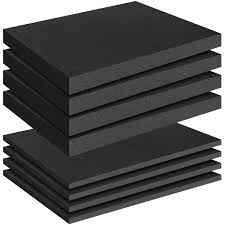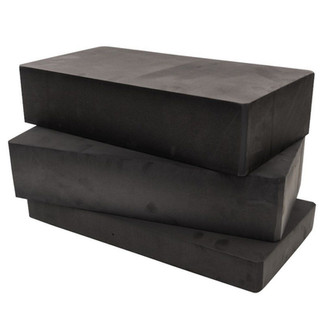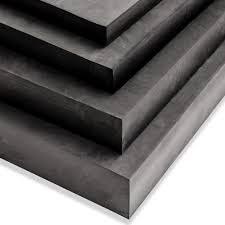
Our ongoing sourcing project in China focuses on High Density Polyethylene (HDPE) Foam. After conducting a comprehensive Due Diligence Report that involved auditing the entire Chinese supply chain, we meticulously evaluated a pool of over 30 potential suppliers. Through this rigorous process, we have narrowed our choices down to three top-tier suppliers, with a particular emphasis on requesting samples from the two best in the market.
Our client in New Zealand, a specialist in the HDPE foam industry, has thoroughly reviewed and approved the production. They have authorized the manufacture of a full 20-foot container of this product, indicating confidence in both the quality and consistency of the selected suppliers.
Despite the ongoing Mid-Autumn Festival in China, which is a significant holiday period, we have successfully maintained production timelines to ensure minimal disruptions.
HDP is a high density, closed cell, cross linked polyethylene polymer foam pipe support for hot and
cold applications.
· Product: High Density Polyethylene Foam 300kg/cbm high density
· Dimensions: 1200mm x 2400mm x 50mm thick
· Density: 300kg/cbm
· Colour: Black colour preferred or other
· Purpose: foam insulation for pipework
Here is a detailed overview of the HDPE foam currently being produced:
Product Quality and Specifications: The HDPE foam is being produced to meet stringent quality standards, ensuring it offers excellent thermal insulation properties, low permeability, and high durability. The closed-cell structure of the foam is key to providing superior moisture resistance and thermal efficiency.
Supplier Collaboration: Our shortlisted suppliers have a proven track record of delivering high-quality HDPE foam products. They are equipped with advanced manufacturing facilities and quality control systems, which are crucial for maintaining the integrity and performance of the foam.
Production Process: The manufacturing process has been carefully monitored to adhere to the client's specifications, ensuring that the final product meets the required performance criteria. Quality checks at various stages of production are in place to guarantee consistency and reliability.
Shipping and Logistics: The production is set to be completed within the agreed timeline, with the 20-foot container being prepared for shipment to New Zealand. We have coordinated with our logistics partners to ensure a smooth and timely delivery despite the holiday season in China.
This project underscores our commitment to delivering high-quality materials by leveraging our expertise in navigating the complexities of China's supply chain. The HDPE foam being produced will provide our client with a reliable, cost-effective solution, aligning with their specialized requirements and industry standards.
High Density Polyethylene (HDPE) Foam (Closed Cell) for Pipe Insulation
HDPE foam is a versatile, durable, and efficient material for insulating hot and cold pipes. Here’s an overview of its properties and benefits in this application:
Properties of HDPE Foam (Closed Cell):
Closed-Cell Structure: The foam has a closed-cell structure, which means that the cells are not interconnected. This structure provides excellent moisture resistance, preventing water absorption and reducing the risk of mold or mildew growth.
Thermal Insulation: HDPE foam has low thermal conductivity, making it an effective insulator. It helps maintain the desired temperature of the pipes, whether hot or cold, reducing heat loss or gain.
Lightweight and Flexible: Despite its density, HDPE foam is lightweight and flexible, making it easy to install around pipes of various shapes and sizes.
Durability: HDPE foam is resistant to chemicals, oils, and most solvents, ensuring a long service life even in harsh environments. It also has good impact resistance, which protects pipes from physical damage.
Low Permeability: The material has low permeability to gases and vapors, providing an added layer of protection against environmental factors.
Benefits of Using HDPE Foam for Pipe Insulation:
Energy Efficiency: By minimizing heat loss in hot pipes and heat gain in cold pipes, HDPE foam insulation contributes to overall energy efficiency. This can lead to reduced energy costs for heating and cooling systems.
Prevents Condensation: For cold pipes, HDPE foam insulation helps prevent condensation by maintaining a barrier between the pipe surface and the surrounding air. This reduces the risk of corrosion and water damage.
Temperature Stability: It helps maintain a consistent temperature within the pipes, which is crucial for processes that require precise thermal control.
Easy Installation: Its flexibility and lightweight nature make HDPE foam easy to cut, shape, and install around pipes. It can be used in both new installations and retrofitting existing systems.
Cost-Effectiveness: HDPE foam is relatively affordable compared to other insulation materials, offering a cost-effective solution without compromising performance.
Sound Dampening: Although not its primary function, HDPE foam can also help reduce noise from pipe vibrations, contributing to a quieter environment.
Applications:
Hot Water Pipes: Helps retain heat in hot water systems, improving efficiency and reducing energy consumption.
Cold Water Pipes: Prevents heat gain and condensation, protecting pipes from potential damage and maintaining water temperature.
HVAC Systems: Suitable for insulating various components in heating, ventilation, and air conditioning systems.
Installation Considerations:
Thickness: The thickness of the insulation should be chosen based on the specific temperature requirements and environmental conditions.
Sealing Joints: Proper sealing of joints and seams is essential to maintain the integrity of the insulation.
UV Protection: For outdoor applications, HDPE foam should be protected from direct sunlight, as UV exposure can degrade the material over time. A protective covering or UV-resistant coating can be used.
In summary, HDPE foam (closed cell) is an excellent choice for insulating hot and cold pipes due to its thermal efficiency, durability, and ease of installation. It provides a cost-effective solution for maintaining pipe temperatures, preventing condensation, and improving energy efficiency.
‘
Seeking a robust China supply chain or a dedicated China procurement arm for your business?
Elevate your business profits and enhance your return on investment. Reach out to Dracon International for a discussion about your project. We're here to share our experience with no obligations and no strings attached.
Connect to our company and our platforms, see below:
Signup newsletter: https://www.dracon.co.nz/
Our Case Studies: https://www.dracon.co.nz/case-studies
Instagram: https://www.instagram.com/timikara_dracon/
Face Book: https://www.facebook.com/DraconNZ/
#HDPEFoam #InsulationMaterial #ClosedCellFoam #ThermalInsulation #PipeInsulation #MoistureResistant #DurableFoam #EnergyEfficient #FoamInsulation #ChinaSourcing #SupplyChainAudit #NZClient #IndustrialMaterials #HighDensityFoam #FoamProduction #MidAutumnFestival #QualityControl #BuildingMaterials #CostEffectiveInsulation #Manufacturing
#chinasource #sourcechina #chinaconstruction #buyChina #chinaprocurement #chinaagent #ChinaInspections #chinabuildingmaterials #chinaconstruction #chinarawmaterials #FactoryInspections #ChinaBuyingAgent #ChinaProcurement #SourcingInChina #ChinaConstructionMaterials #ChinaBuildingMaterials #ChineseSuppliers #GlobalSourcing #QualityControlChina #ImportFromChina
























コメント